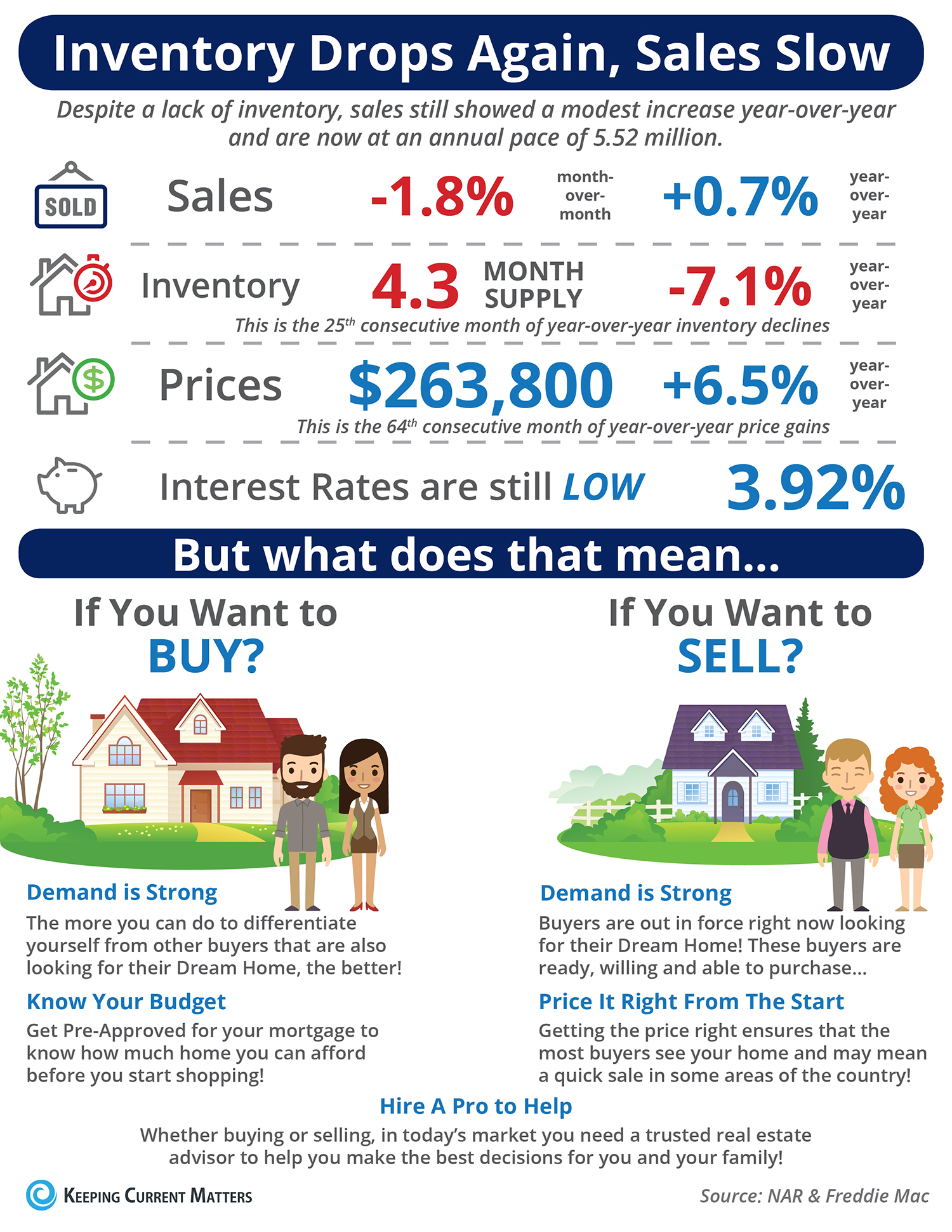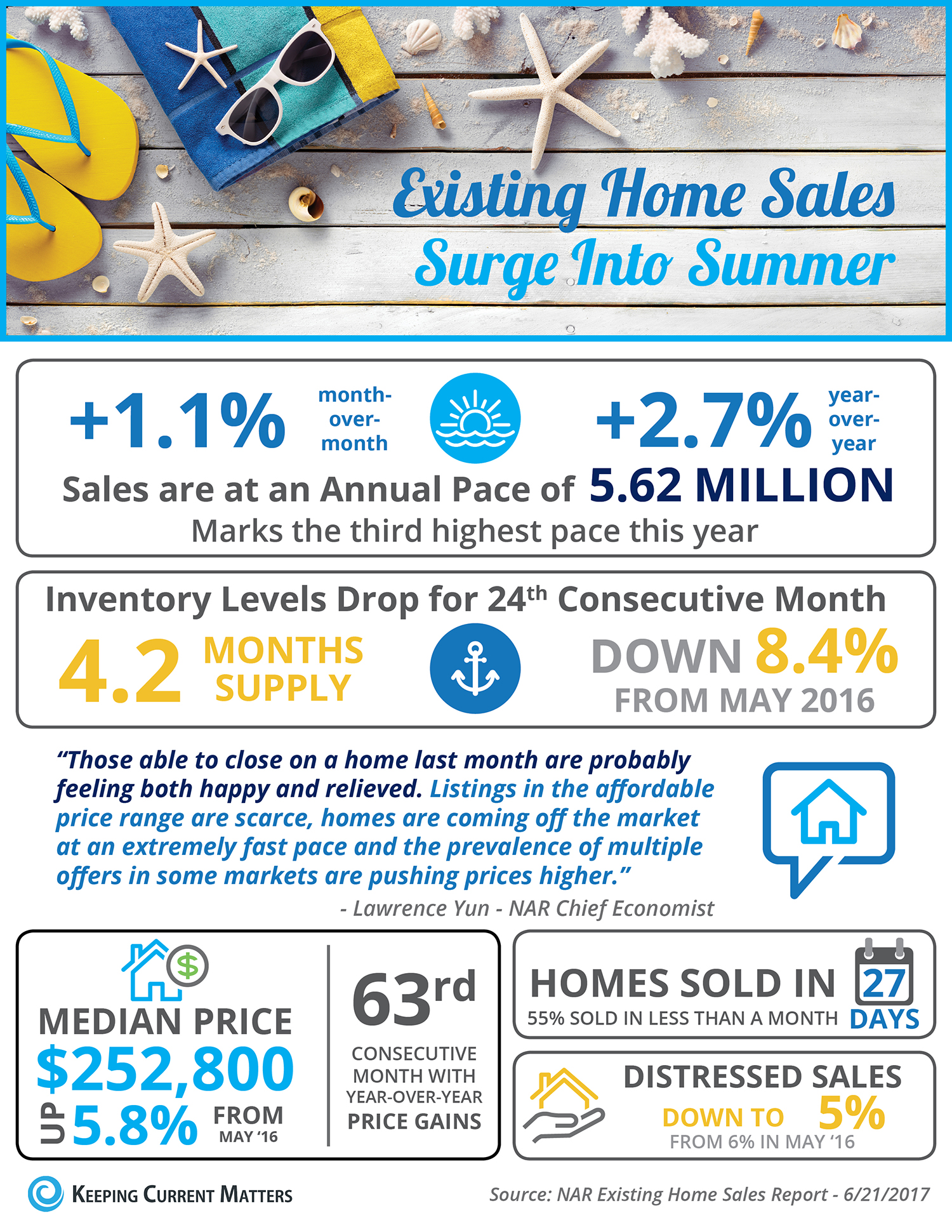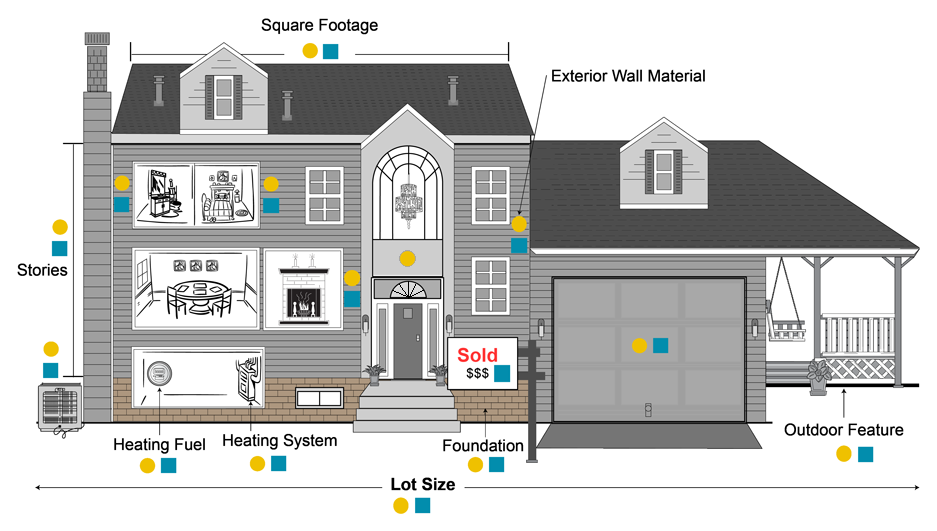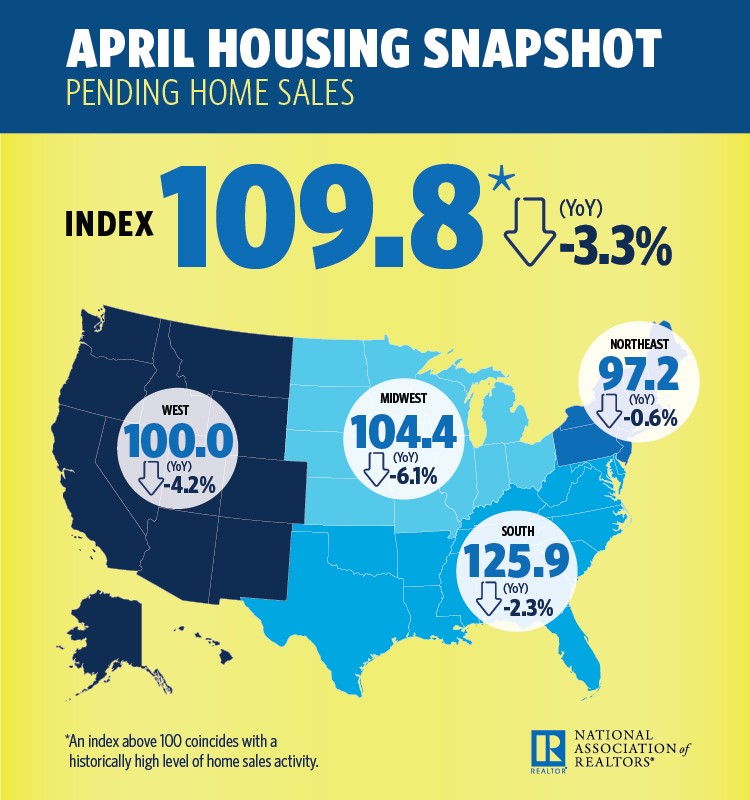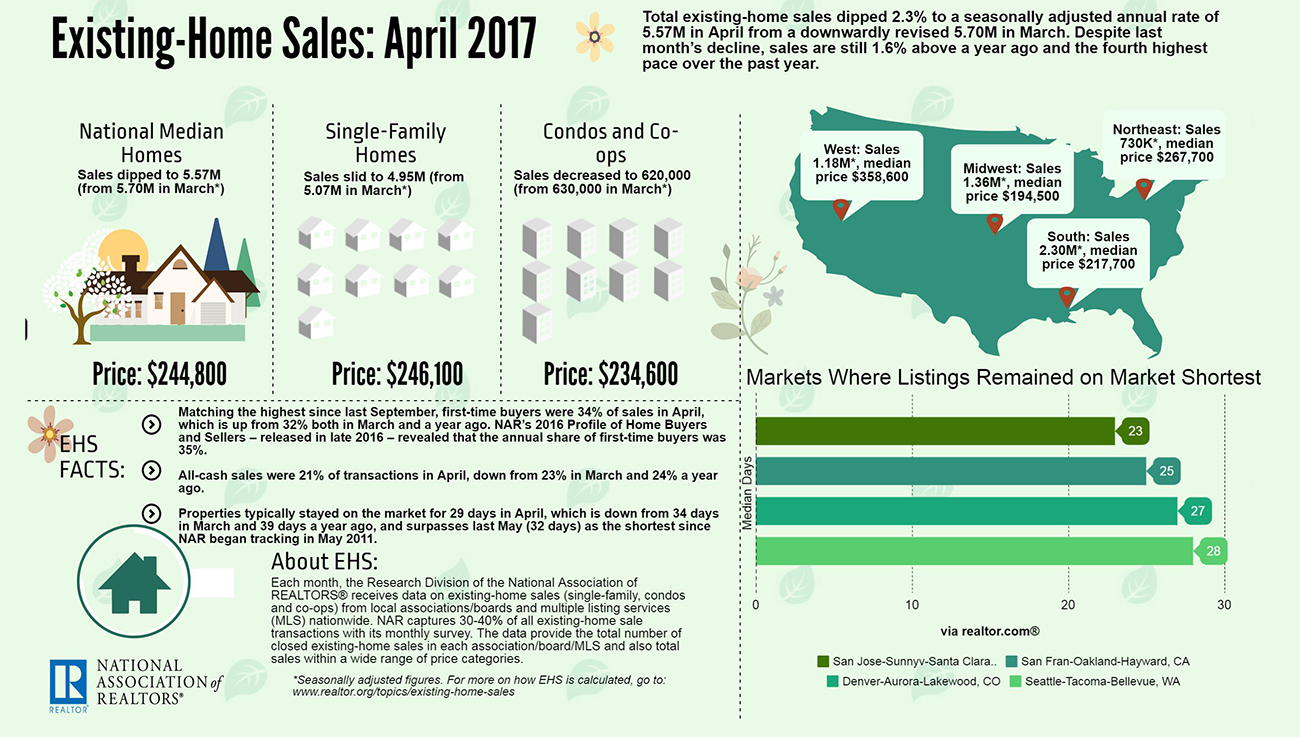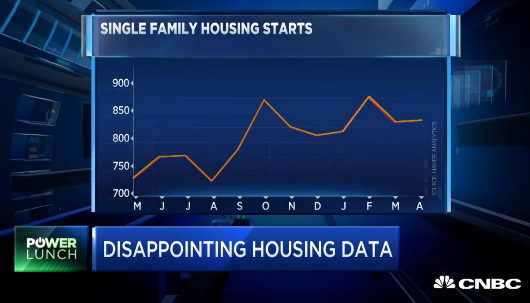- Existing Home Sales are now at an annual pace of 5.52 million.
- Inventory of existing homes for sale dropped to a 4.3-month supply, marking the 25thmonth in a row of declines.
- The median price of homes sold in June was $263,800. This is the 64th consecutive month of year-over-year price gains.
Inventory Drops Again, Sales Slow
EXISTING HOME SALES SURGE INTO SUMMER [INFOGRAPHIC]
Highlights:
- Existing Home Sales reached their third highest mark this year in May.
- Inventory of homes for sale has dropped 8.4% since last year, marking the 24th consecutive month of year-over-year declines.
- NAR’s Chief Economist, Lawrence Yun had this to say: “Those able to close on a home last month are probably feeling both happy and relieved. Listings in the affordable price range are scarce, homes are coming off the market at an extremely fast pace and the prevalence of multiple offers in some markets are pushing prices higher.”
Buyers Face ‘Double Whammy’ This Spring
For the second consecutive month, pending home sales scaled back as significantly weak supply levels of homes for sale continue to press on affordability conditions, the National Association of REALTORS® reported Wednesday.
NAR’s Pending Home Sales Index, a forward-looking indicator based on contract signings, fell 1.3 percent in April to a 109.9 reading. The index is now 3.3 percent below a year ago. All four major regions saw a decrease in contract signings last month, except for the West.
“Much of the country for the second straight month saw a pullback in pending sales as the rate of new listings continues to lag the quicker pace of homes coming off the market,” says Lawrence Yun, NAR’s chief economist. “REALTORS® are indicating that foot traffic is higher than a year ago, but it’s obviously not translating to more sales. Prospective buyers are feeling the double whammy this spring of inventory that’s down 9 percent from a year ago and price appreciation that’s much faster than any rise they’ve likely seen in their income.”
Low inventory levels likely won’t go away anytime soon either, Yun says. Homebuilding activity remains constrained and too few homeowners are listing their homes for sale, Yun notes.
“The unloading of the single-family homes purchased by real estate investors during the downturn for rental purposes would also go a long way in helping relieve these inventory shortages,” Yun says. “To date, there are no indications investors are ready to sell. However, they should be mindful of the fact that rental demand will soften as the overall population of young adults starts to shrink in roughly five years.”
Yun’s housing forecast calls for existing-home sales to be around 5.64 million this year, an uptick of 3.5 percent from 2016 (5.45 million). NAR forecasts that median existing-home prices will rise about 5 percent.
Existing Home Sales: April 2017
Read more market information from the National Association of Realtors.
Starter homes still lag in housing market
Downtown Bellevue Condos Coming: Will Help With Low Inventory
 Condo development has been slow in Bellevue over the past few years. It’s no wonder, with the risk taken by the developers.
Condo development has been slow in Bellevue over the past few years. It’s no wonder, with the risk taken by the developers.
New construction of condominiums almost always results in litigation (thanks to the Washington Condominium Act). To protect themselves, developers acquire special insurance which can run upwards of $55,000 per unit, on top of construction costs! Because of this, many developers choose to build apartments instead. It is hard to blame them, considering they can lease out an entire building within 6 months for
New construction of condominiums almost always results in litigation (courtesy of the Washington Condominium Act). To protect themselves, developers must acquire special insurance which can run upwards of $55,000 per unit, on top of construction costs! Because of this, many developers choose to build apartments instead. It is hard to blame them, considering they can lease out an entire building within 6 months for top of market rents and recap their investment in a short amount of time.
Click Here for the entire article.
